Friday, September 18, 2020
Get a $100 XBox Gift Card!
Get
the offer click here
https://cutt.ly/wfF4aJi
Send
Me A Mail To:
hmehide358@gmail.com
For
more visite:
https://giftcard4u24.blogspot.com/
only
for USA
Get moe offer click the
links
Thursday, September 17, 2020
Need help riding Muni? We’ve got TIPs!
By Mariana Maguire
In April 2020, as part of our emergency response to the COVID-19 pandemic, we launched the COVID-19 SFMTA Ambassador program along Market Street – one of the city’s busiest Muni corridors where multiple core transit routes overlap and connect. As we have restored more Muni service and increased frequency on routes, demand has grown for ambassadors to serve additional high ridership locations and support ongoing Muni public health and customer information needs. To meet this public need, we are expanding the program beyond Market Street and are renaming it the Transit Information Program (TIP).
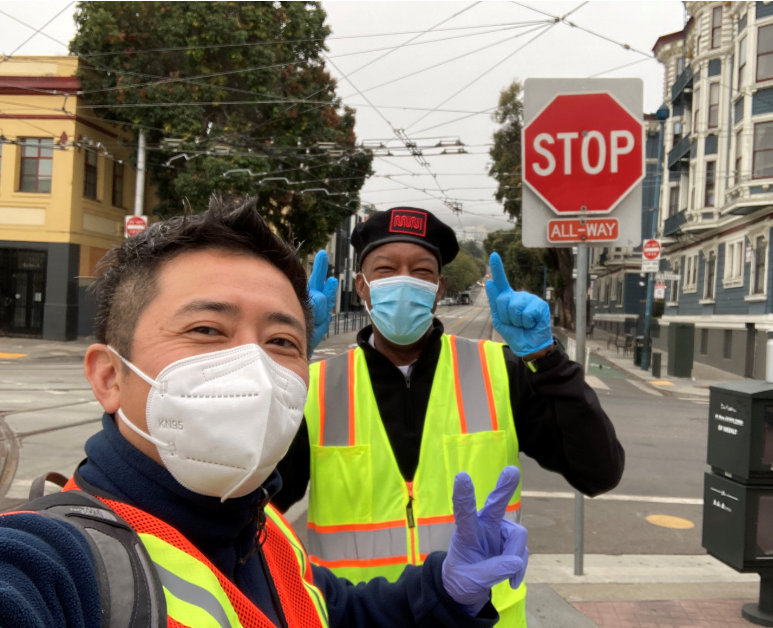
Photo: Former COVID-19 Ambassadors, now known as Transit Information Program staff (TIPs)
TIP staff (TIPs) come from many of our existing customer facing programs and staff divisions whose jobs changed because of the shifts to our system due to COVID-19. For example, you might meet a cable car or historic streetcar operator handing out masks to customers without face coverings. One of our Crossing Guards might encourage you to keep physical distance while waiting at a stop or as you board a vehicle. A Muni Transit Assistance Program staff member might hop on a vehicle to thank you for keeping your face covering on throughout your trip. Or a Transit Fare Inspector may help you find the correct bus stop.
These staff share a combined wealth of skills and understanding of the customer experience. Through their efforts as TIPs we aim to deepen the culture of customer service at the SFMTA.
The goal of this expanded effort is to provide a higher level and broader reach of direct customer engagement and support at key Muni stops to promote public health guidelines, support Muni operators, answer customer questions, and help monitor customer loads on trains when Muni Metro eventually reopens. We recognize that our fast-paced and ongoing Muni service changes have been challenging for all of us as a community, and we need to be even more available for our customers to offer support.
Our TIPs are here to help. Over the next few weeks, you will start to see them more often around town as we test different locations. They will provide rider reminders, hand out masks to customers who want to ride Muni but do not have a face covering and provide basic transit service information.
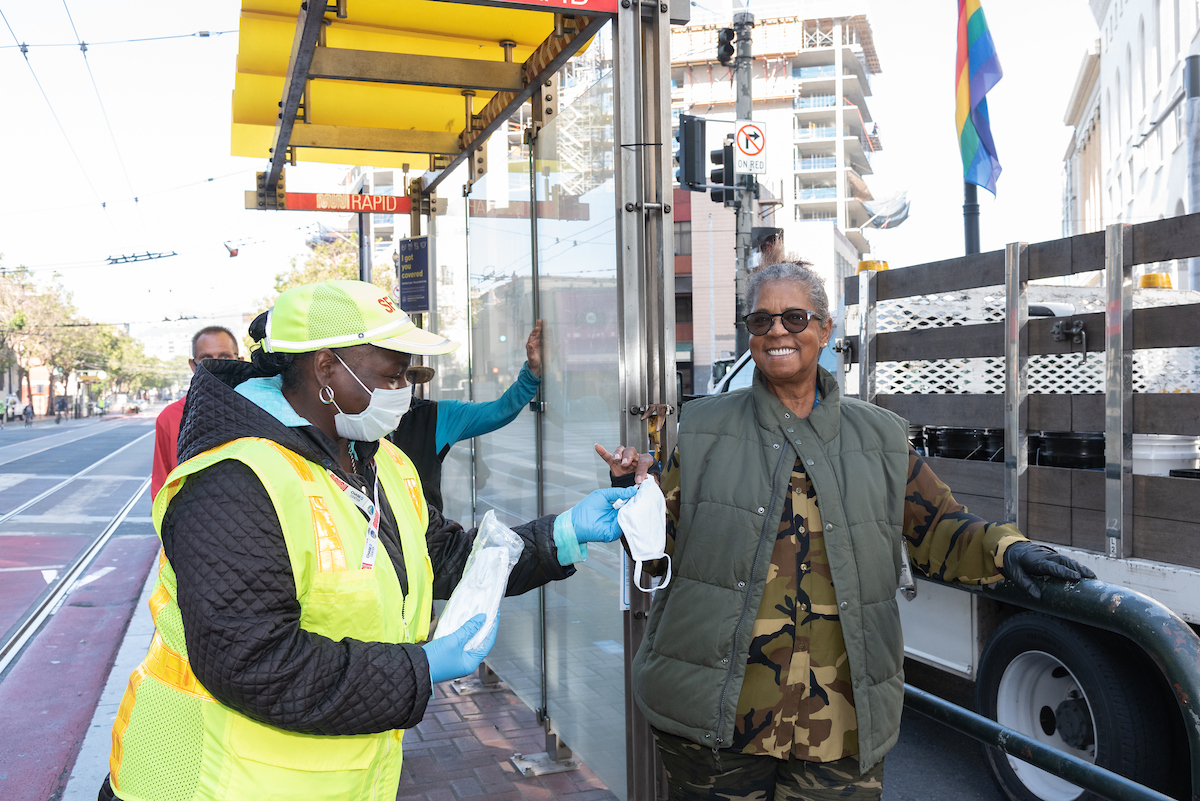
Photo: Transit Information Program staff (TIPs) helping customers during August service changes.
TIPs will be posted initially at about 45 locations, mainly along high-ridership routes like the 8 Bayshore, 9 San Bruno, 14 Mission, 38 Geary, 49 Van Ness, and Metro bus stops. These locations include key intersections where multiple routes cross, like Mission and 4th, Mission and 24th, Mission and Ocean, San Bruno and Silver, and Stockton and Pacific. The program is designed to be flexible to changing needs, so these locations may change day to day or over time, depending on where TIPs can be of most service to our customers. Air quality issues and civic events may also impact TIPs deployment.
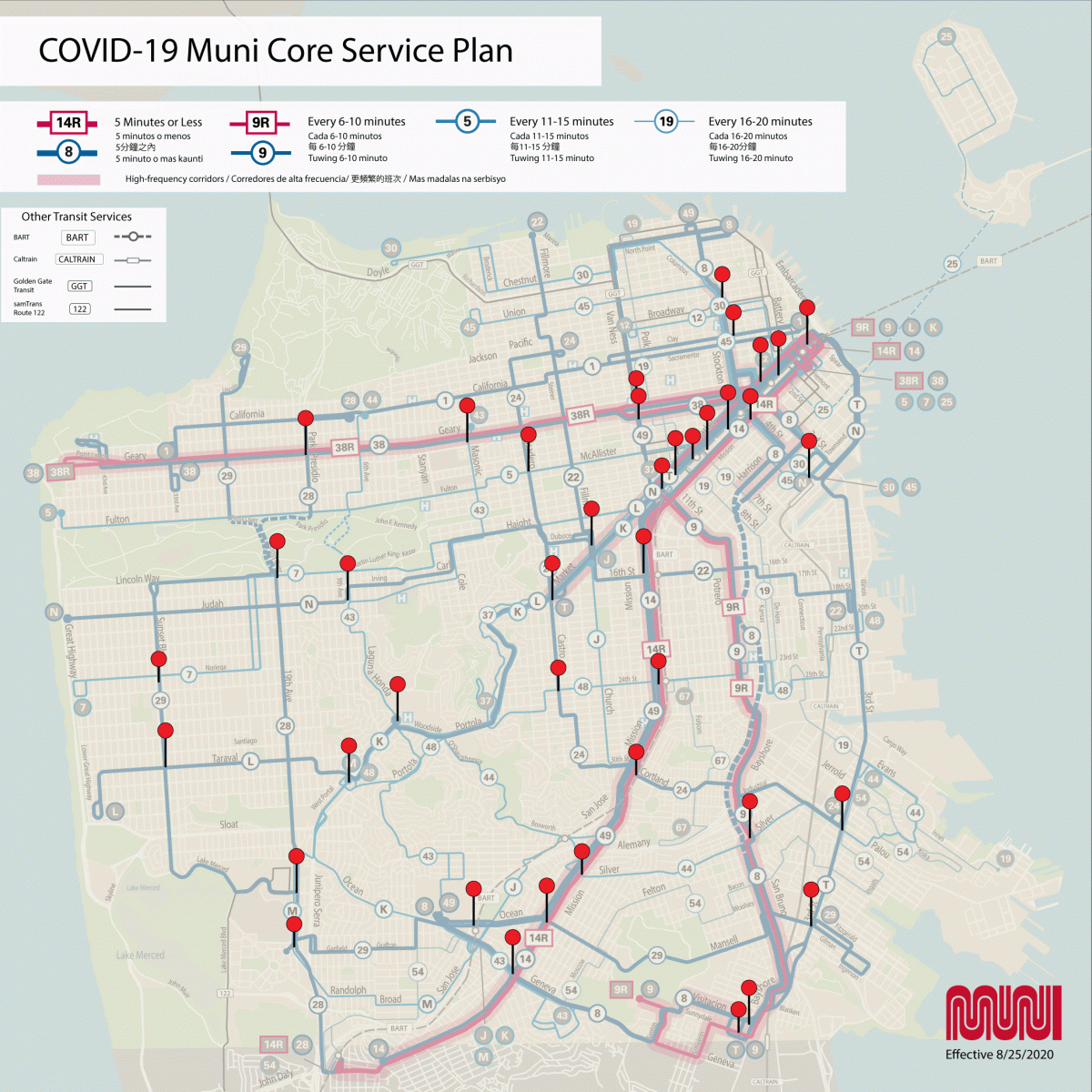
Map: Initial test locations for the expanded Transit Information Program
While we continue to take steps to improve capacity, we still sometimes still see crowding at bus stops and on buses, especially along our high ridership corridors like Geary, Market, Van Ness, and Mission streets. If a bus is about half full or more, our operators will stop picking up additional customers until there is enough room for more. Operators will indicate this to customers by placing a “Drop-Off Only” sign in their windshield and TIPs may recommend that customers wait for the next bus. We know that this continues to be tough on everyone, and we need your help to make physical distancing work.
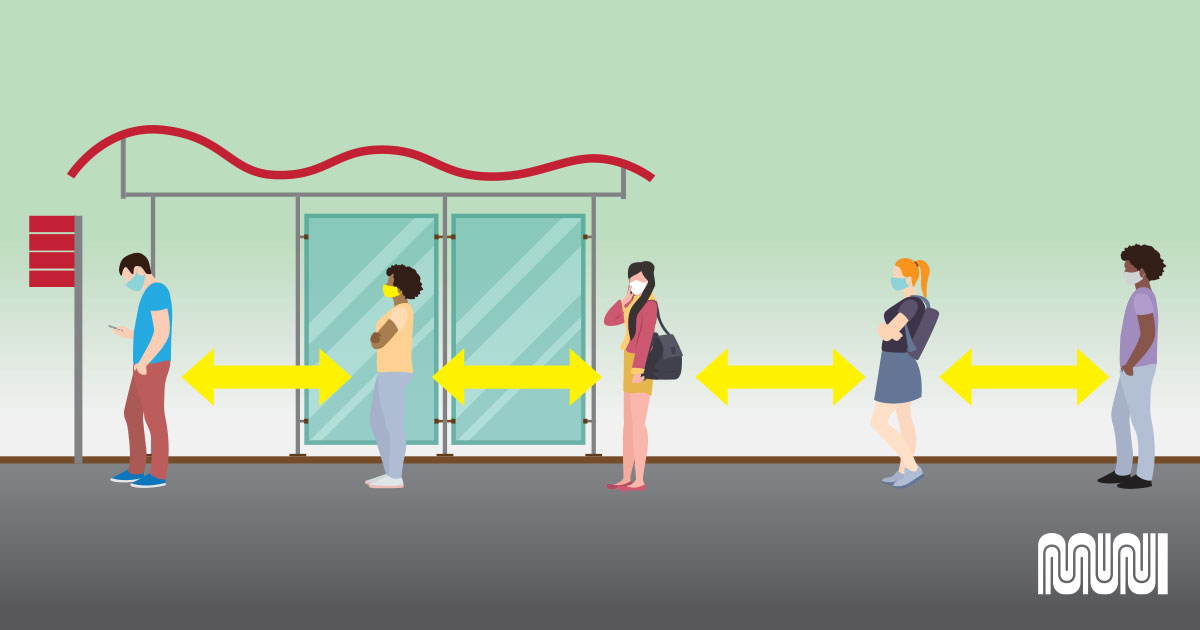
Graphic showing physical distancing at Muni stops
We also continue to see some customers who are not wearing face coverings. For our customers’ and operators’ well-being, operators may skip stops if customers are not wearing face coverings. It is vital that every customer do their part by wearing a face covering on Muni.
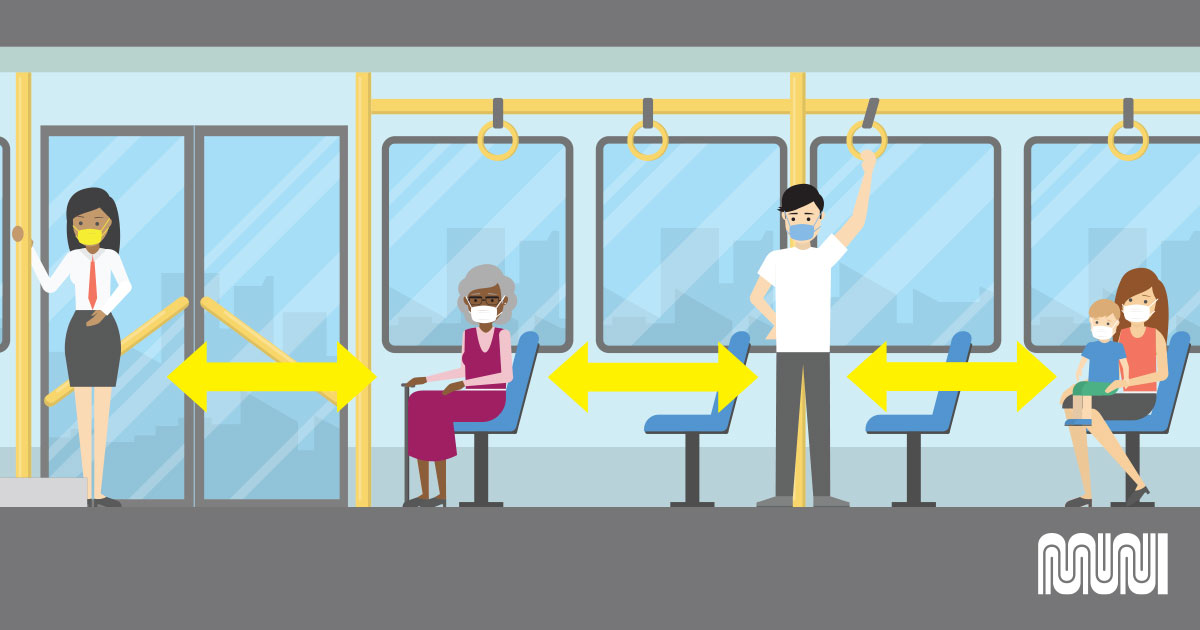
Example of physical distancing on Muni buses: Wear face coverings and give space for fellow riders.
Muni has been hit especially hard by COVID-19. The immediate health and financial impacts have cost SFMTA 30-40% of its service hours and about 80% of our capacity. It’s also put a $200M hole in our operating budget. Though ridership is far lower that pre-COVID levels, Muni continues to serve approximately 150,000 customers daily. Despite many challenges, our staff are working hard to provide essential trips and hopefully our TIPs will improve your experience on Muni.
Customer Reminders
Remember, we still need your help. Help reduce the risk of COVID-19 transmission by:
- Staying home, except for essential trips.
- Shopping locally and supporting your neighborhood businesses.
- Wearing a face mask or covering over your mouth and nose and maintaining physical distance such as leaving a seat open between you and anyone who is not in your household.
Use alternate transportation whenever possible – walk, bike or take a taxi – to save a seat on Muni for those who don’t have other options.
- Our Essential Trips Card program is a cost-effective way for seniors and people with disabilities to use taxis instead of Muni.
- Our Lifeline Program provides monthly unlimited access at a 50% discount for customers with limited income.
- Carshares and micromobility options are also available. Visit our COVID-19 Developments and Response page for more information.
If you do need to travel on Muni:
- Please respect your Muni operator. They are working hard for you.
- Face coverings are required on Muni. To avoid getting passed up, cover your nose and mouth with face cover or mask while you are waiting for Muni and on Muni.
- Board by the back door unless you require assistance.
- Give yourself extra time just in case. Your fare is good for two hours across multiple routes.
Visit our COVID-19 Developments and Response page for the latest information about Muni routes in service or to explore alternate ways to get around the city. To provide feedback on any Muni service changes please use our Muni Feedback Form.
Published September 18, 2020 at 04:41AM
https://ift.tt/3kEULnl
Wednesday, September 16, 2020
TAKE SURVEYS & GET 10$
Get
the offer click the link
Send
Me A Mail To:
For
more visite:
https://giftcard4u24.blogspot.com/
Remember
Only For USA
Get moe offer click the
links
Get $750 Sent to Your Venmo!
Get $750 Sent to Your Venmo!
Get the offer click here
Send Me A Mail To:
For more visite:
https://giftcard4u24.blogspot.com/
Get moe offer click the
links
Tuesday, September 15, 2020
Muni Transit Recovery and Measuring the Transportation Recovery Plan’s Progress
By Bradley Dunn
As the economy takes further steps to reopen this month, the SFMTA remains committed to transparency. Today, we are releasing our Muni: Transit Recovery (Recuperación de Muni Transit, 恢復公交服務, and Pagbawi ng Muni Transit) report along with new data dashboards that help us evaluate the SFMTA’s overall response during COVID-19. Taken together, these reports give a window into what we are doing and how we plan to move forward.
Muni: Transit Recovery Report (Recuperación de Muni Transit, 恢復公交服務, and Pagbawi ng Muni Transit)
This report explains how we are adapting to meet San Francisco’s changing transportation needs and what our customers and the public can expect from Muni. It also reminds our customers of both what they need to do to ride Muni and what we’re doing to minimize the risk of transmission while getting essential workers where they need to go.
Examples include:
- What we are doing to minimize transmission risk for our staff, especially operators and other frontline workers
- How we’ve stepped up sanitizing our vehicles
- How we’re providing service with the agency’s COVID-driven budget crisis
- How we are delivering service to people who need it the most
- What we are doing to be transparent, share data and conduct outreach to the public
Our Muni Transit Recovery (Recuperación de Muni Transit, 恢復公交服務, and Pagbawi ng Muni Transit) report represents key customer-facing initiatives associated with our Transportation Recovery Plan (TRP). The TRP is guided by the following goals:
- Protect the health and safety of SFMTA employees and the public.
- Support a strong economic recovery
- Promote sustainable alternatives such as walking and bicycling.
- Advance the SFMTA’s equity, environmental sustainability and customer service goals;
- Adapt transportation infrastructure and services to best serve San Francisco in the long term.
Transportation Recovery Plan Dashboards: See the Data Driving Recovery
We have designed an evaluation framework for the TRP that is nimble and representative of the recovery goals above. Today we’ve published our TRP Evaluation Dashboards so that you can track our progress.
These dashboards provide a holistic view across the programs within the TRP so anyone can track our progress toward our goals. Our evaluation framework identifies high-level objectives aligned with the goals of the TRP and trackable metrics. These allow us to monitor progress on the TRP’s most prominent strategies including COVID-19 Muni Core Service, Temporary Emergency Transit Lanes, Slow Streets, and the multiagency Shared Spaces program.
SFMTA relies upon pre-pandemic data and along with data made available by the implementation of our recovery solutions and programs to make strategic decisions and address trade-offs. Individual dashboards will be updated either weekly or monthly, based on data availability. Additionally, as our recovery efforts are ongoing, additional data will be made available as we refine and expand our evaluation efforts.
We are working hard to meet San Franciscans' changing transportation needs during this pandemic. New programs and initiatives require that the public trust us as we act quickly to try new approaches and work to refine and improve our efforts. Publishing this data helps members of the public see much of the same data that we use to make our decisions.
Published September 16, 2020 at 02:47AM
https://ift.tt/33tZbq5
Muni Transit Recovery and Measuring the Transportation Recovery Plan’s Progress
By Emily Stefiuk
As the economy takes further steps to reopen this month, the SFMTA remains committed to transparency. Today, we are releasing our Muni: Transit Recovery (Recuperación de Muni Transit, 恢復公交服務, and Pagbawi ng Muni Transit) report along with new data dashboards that help us evaluate the SFMTA’s overall response during COVID-19. Taken together, these reports give a window into what we are doing and how we plan to move forward.
Muni: Transit Recovery Report (Recuperación de Muni Transit, 恢復公交服務, and Pagbawi ng Muni Transit)
This report explains how we are adapting to meet San Francisco’s changing transportation needs and what our customers and the public can expect from Muni. It also reminds our customers of both what they need to do to ride Muni and what we’re doing to minimize the risk of transmission while getting essential workers where they need to go.
Examples include:
- What we are doing to minimize transmission risk for our staff, especially operators and other frontline workers
- How we’ve stepped up sanitizing our vehicles
- How we’re providing service with the agency’s COVID-driven budget crisis
- How we are delivering service to people who need it the most
- What we are doing to be transparent, share data and conduct outreach to the public
Our Muni Transit Recovery (Recuperación de Muni Transit, 恢復公交服務, and Pagbawi ng Muni Transit) report represents key customer-facing initiatives associated with our Transportation Recovery Plan (TRP). The TRP is guided by the following goals:
- Protect the health and safety of SFMTA employees and the public.
- Support a strong economic recovery
- Promote sustainable alternatives such as walking and bicycling.
- Advance the SFMTA’s equity, environmental sustainability and customer service goals;
- Adapt transportation infrastructure and services to best serve San Francisco in the long term.
Transportation Recovery Plan Dashboards: See the Data Driving Recovery
We have designed an evaluation framework for the TRP that is nimble and representative of the recovery goals above. Today we’ve published our TRP Evaluation Dashboards so that you can track our progress.
These dashboards provide a holistic view across the programs within the TRP so anyone can track our progress toward our goals. Our evaluation framework identifies high-level objectives aligned with the goals of the TRP and trackable metrics. These allow us to monitor progress on the TRP’s most prominent strategies including COVID-19 Muni Core Service, Temporary Emergency Transit Lanes, Slow Streets, and the multiagency Shared Spaces program.
SFMTA relies upon pre-pandemic data and along with data made available by the implementation of our recovery solutions and programs to make strategic decisions and address trade-offs. Individual dashboards will be updated either weekly or monthly, based on data availability. Additionally, as our recovery efforts are ongoing, additional data will be made available as we refine and expand our evaluation efforts.
We are working hard to meet San Franciscans' changing transportation needs during this pandemic. New programs and initiatives require that the public trust us as we act quickly to try new approaches and work to refine and improve our efforts. Publishing this data helps members of the public see much of the same data that we use to make our decisions.
Published September 16, 2020 at 02:47AM
https://ift.tt/33tZbq5
Liked on YouTube: Watch me stream Champions Legion on Omlet Arcade!
Watch me stream Champions Legion on Omlet Arcade! Follow me for more: https://ift.tt/3cdhzaN #OmletArcade #ChampionsLegion
via YouTube https://www.youtube.com/watch?v=FoEJJB6k4H8
Monday, September 14, 2020
Scooters to Fill Transportation Gaps in More Neighborhoods
By Bradley Dunn
Recent SFMTA authorization enables scooter companies to deploy more scooters and expand into new neighborhoods across San Francisco. Scooters can help by offering an efficient travel choice that is environmentally friendly and fills transportation gaps, especially for shorter trips. With reduced Muni service and returning traffic congestion, the city is focused on promoting sustainable efficient modes of transportation, such as scooters, that do not contribute to congestion or pollution.
More Scooters and Areas Served
To make the scooters more available, the SFMTA recently updated the process and criteria for scooter permittees to request a fleet increase. To be eligible for expansion, they must meet key service, compliance and equity goals like a low-income access program. The companies must also serve new neighborhoods and show an increase in users and/or trips using the Adaptive Scooter Pilot, an effort to make shared micromobility more accessible to people with disabilities.
Prior to the COVID-19 pandemic, the SFMTA implemented a Powered Scooter Share Program to address the significant issues demonstrated during the pre-regulation period of shared scooters in San Francisco. SFMTA’s program permitted four companies to provide shared scooters. The fleets were phased to increase over time.
Once San Francisco's transportation needs changed during the COVID-19 pandemic, the SFMTA's Transportation Recovery Plan sought to meet those needs with expanded options like scooters as the economy reopens.
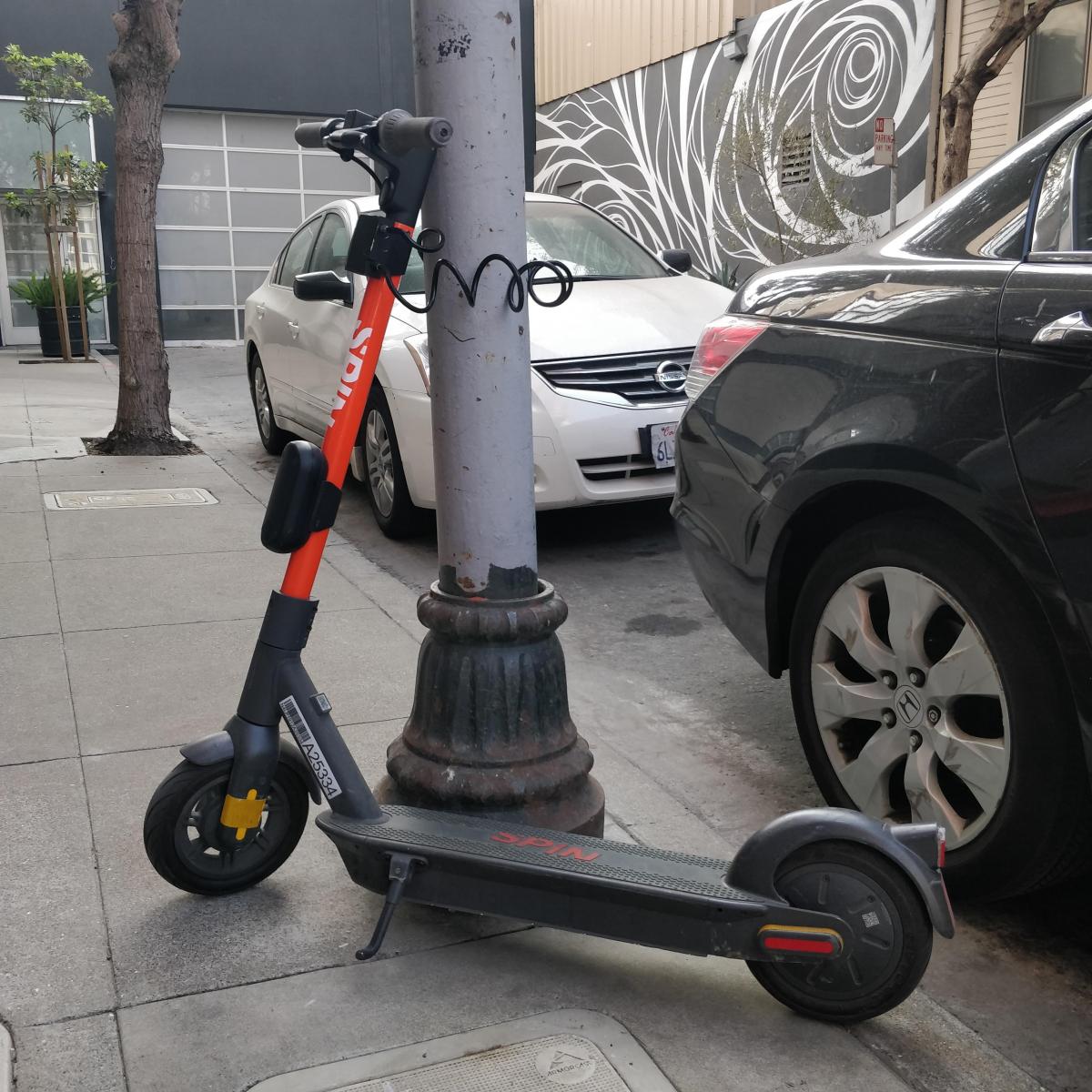
A Spin scooter parked with a lock-to device.
Companies Expanding
Spin will be the first company to expand its fleet and is authorized to add 500 devices scooters to its fleet as of September 3. With this increase, Spin’s fleet will grow to a total of 1,500 scooters and operate in three more neighborhoods as required by the program: Inner/Central Richmond, Inner/Central Sunset and Haight.
Lime recently acquired JUMP, and because both companies hold a permit, we are undertaking a process to review the acquisition and approve the permit transfer. Once the permit transfer is final, Lime would be allowed to operate 2,000 scooters. As part of the requirements for that expanded fleet, the SFMTA will require that the Richmond District and Sunset District also be served.
Increased Enforcement and Transparency
With fleet expansion, the SFMTA has increased our enforcement and monitoring of scooter share to address compliance issues. The SFMTA will increase enforcement sweeps and respond to areas where there have been complaints. Robust enforcement of SFMTA’s oversight functions are critical for public safety. For transparency in this effort, we’ve published a Scooter Share enforcement dashboard.
Published September 15, 2020 at 06:38AM
https://ift.tt/2RtsQKs
Get 10,000 APEX Legends Coins Now! jpj
Get 10,000 APEX Legends Coins Now!
If download you can get offer.
Click the link to get the offer
Get moe offer click another link
Get 10,000 APEX Legends Coins Now!
Get 10,000 APEX Legends Coins Now!
If download you can get offer.
Click the link to get the offer
Get moe offer click another link
View24
View24
-
The 150 Year History of Muni’s ‘Newest’ Route: The 15 By Jeremy Menzies With the return of Muni’s 15 route earlier this year as the 15 Bay...
-
View24
-
q www.masicdeel.blogspot.com
-
Tell us What You Want Muni Service to Be Like in 2022 By Shalon Rogers The 15 Bayview Hunters Point Express is one of Muni’s newest routes...
-
Bringing Back Muni Better By Julie Kirschbaum Much of Muni service has already been restored since the pandemic-related service reductions...


